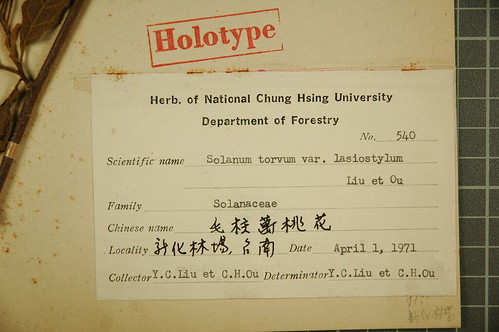Principle of Typification模式化原則
在科群、屬群或種群中的每個命名分類單元,擁有一個具名模式,以作為決定該名稱應用時的客觀參考標準。
Species were represented by a series of “typical” specimens.
Types to types: there are 22 forms of types (1)names or (2) specimens.
Species-group types☆☆☆
Type locality模式產地
all types of species and subspecies are tied to a spatial location called the type locality
採集或觀察一個命名種的具名模式地點。
Holotype 正模式
single specimen designated by the author of the name at the time of publication of the origin description.
建立一個命名分類單元時,被指定確定作為一個命名種或亞種的具名模式單一標本。
Neotype新模式
a specimen later designated to replace a holotype (or other primary type) if the latter can be documented as lost or destroyed.
當正模式遺失或損毀,另外指定一個標本作為模式標本,如果指定的太爛,委員會會另外指定一個標本。
Syntypes總模式
a group of specimens thought to represent a species, as designated or indicated by the author of the original description. These specimens may sometimes be referred to as the “type serious”. 未指定正模式或選模式的一個模式系列中的每個標本均稱。(大家都是模式標本~)
Lectotype選模式
one of the syntypes chosen by the original or subsequent author to function as the name beaer.
從總模式中指定一個作為模式標本。
Primary types
are customarily deposited in recognized institutions dedicated to the long-term maintenance of collections.
最原始最老的標本。
Isotype
a specimen (in botany) collected from the same individual plant as the holotype.
Topotype產地模式
specimens collected from the same location as the holotype (or at the same time)
Paratypes副模式
一個模式系列中,除了正模式以外的標本都是。如果正模式不幸陣亡,這些就成為新模式的候選人。
Allotype異模式: 非規約術語,一個標本的性別與正模式相反。


沒有留言:
張貼留言